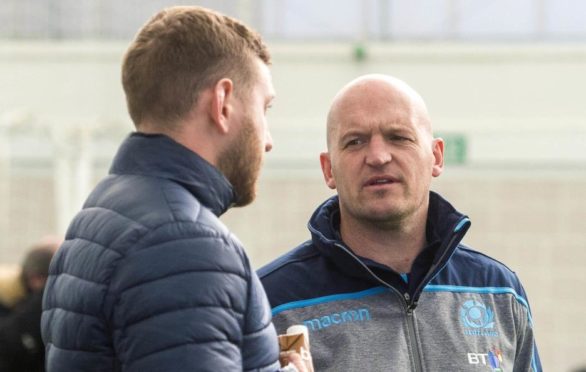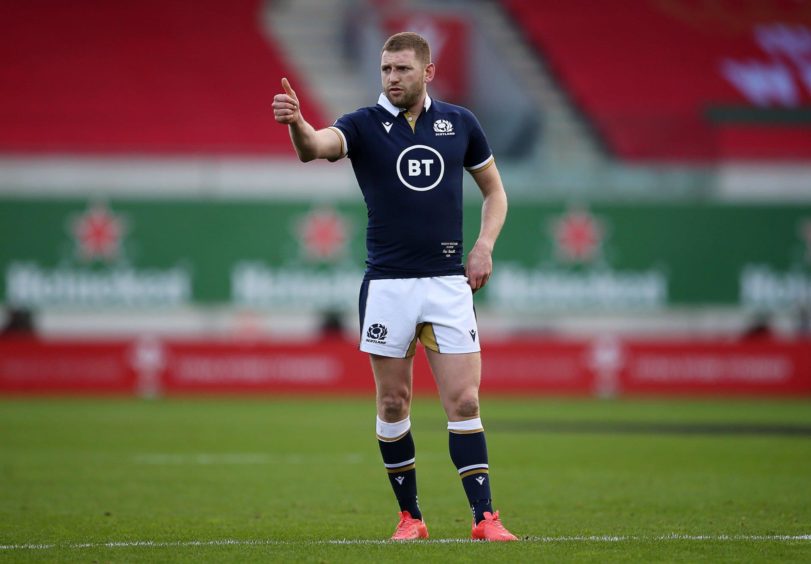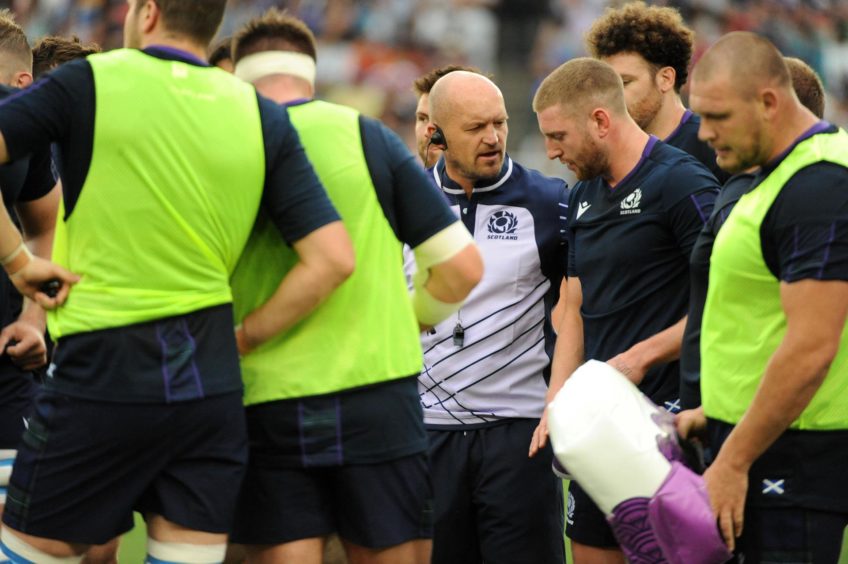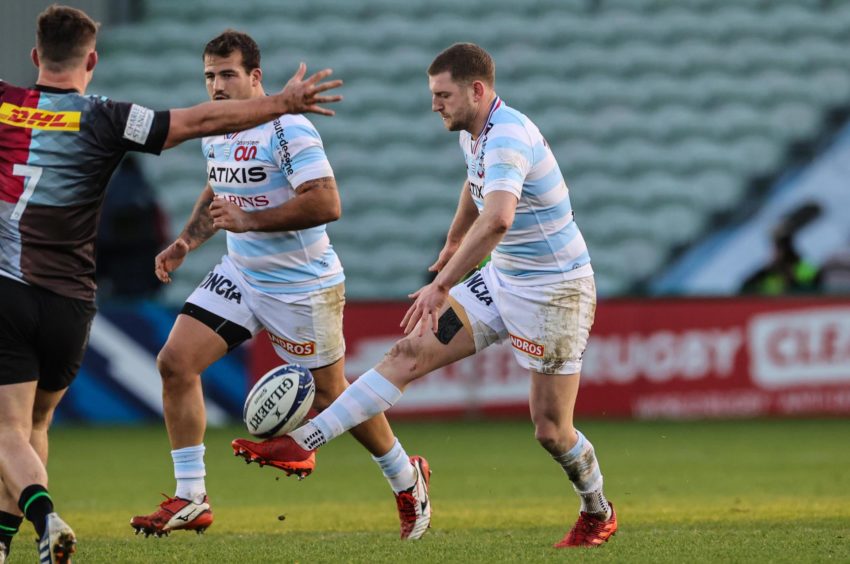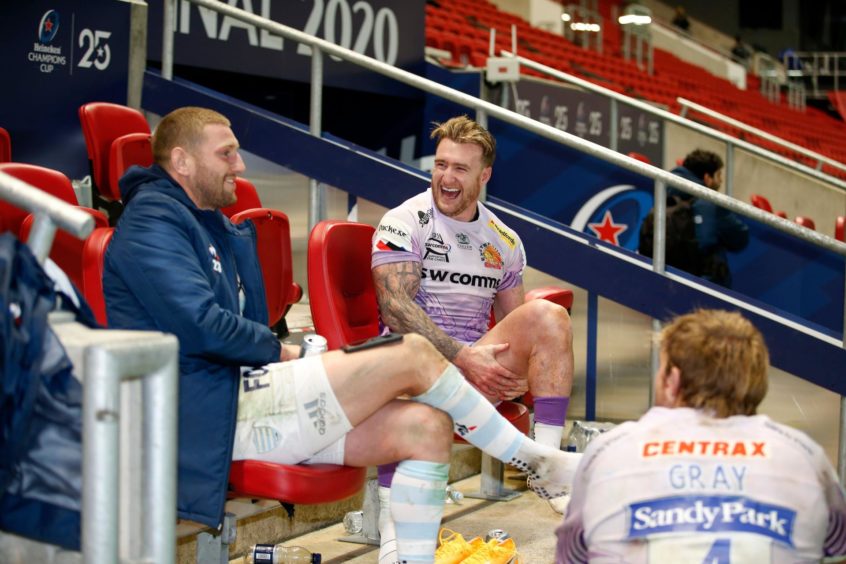It’s been two years since it all started, and 12 months since it came to a head.
The question now is: are Gregor Townsend and Finn Russell really back on the same wavelength?
Scotland are back at Twickenham this weekend, where the dispute between the head coach and his most creative player really started.
It initially resulted to the greatest comeback in Scottish rugby history, but their relationship deteriorated during a dreadful World Cup. Matters finally broke when Russell walked out of camp a year ago, before the first Six Nations game of 2020.
The stand-off between the two great Scotland 10s ended over lockdown zooms this summer. Russell was welcomed back into the fold in the autumn.
But he was to play just an hour in total against Georgia and Wales before suffering a groin injury. We never really got to see whether it was Finn unleashed or playing to stricter orders.
Russell is central to Scotland’s plans for this Six Nations – more so than he was even last year, with no Adam Hastings in reserve. Is he on a short leash, or able to play his off-the-cuff, often inspired – and occasionally calamitous – natural game?
The start of it, and the comeback
It was 2019 in the dressing room at Twickenham at half-time where this clash of personalities first really emerged publicly. Russell was later to claim it had been there from far earlier.
Down a calamitous 31-7 to England, there were raised voices in the Scotland shed, and damn right there should have been.
Scotland were taking a pasting, and something had to change. In the aftermath of the breathless, incredible second half where Scotland fought back to lead 38-31 only to surrender an equalising try deep into added time, the narrative was set – by Finn.
Russell, accepting the man of the match award after the comeback, spoke of “an argument” over strategy at half-time.
The accepted notion was maverick Russell had switched tactics which resulted in the transformation of the contest. Only, that didn’t really happen.
Scotland didn’t start running wild instead of kicking. They just kicked much more effectively, and Russell was able to control the game with the pack actually making ground, rather than being stifled as they were in the first half.
Finn did open his box of tricks in the England 22 in the second half, but he was allowed to: Scotland’s attacks in the first 40 minutes floundered on mistakes; their only try was a 60 metre charge down by skipper Stuart McInally.
An unhappy World Cup
You’d have thought the thrills of the second half at Twickenham in 2019 would be Scotland’s blueprint from then on. But Townsend, he confirmed later, was far more concerned about the points they had conceded.
The defensive gameplan was overhauled, with the Rugby World Cup just a few months away. Townsend became convinced Scotland had to become tougher to beat.
The Scots were together for a gruelling three months in the build-up to Japan. It became clear even before they got to tournament that Russell was unhappy with the tactical direction the team were taking.
There followed the utter debacle of the opening game against Ireland. Instead of being tougher to beat, the Irish found it disarmingly easy. Scotland did play decently until losing to an inspired Japan in Yokohama and missing the quarter-finals.
The walkout
Ostensibly, it was an argument over a new team rule banning more than one drink at the bar at the team hotel that caused Russell to walk out prior to the game against Ireland to start the 2020 Six Nations. But nobody really ever thought it was anything to do with that.
Given considerable free rein at his club Racing 92, Russell clearly resented having to stick to an unexciting, restricted gameplan for Scotland. An interview with the player printed the day after Scotland’s loss to England in the second game of the championship hinted as much, but didn’t really outline specific grievances.
Russell did aver that he and Townsend – despite their time together as coach and player at Glasgow – had “no real relationship”. The head coach’s response to this, outwardly at least, was to express puzzlement.
In the end the timing of that interview almost ensured that Russell lost the argument. Although he was back in contact and advising the Scots on the French by Round Four of the championship, he was not recalled to play – a decision that appears to have been mutually agreed.
Russell would have returned for the summer tour to New Zealand and South Africa had the Covid-19 lockdown not intervened, but communication had been fully restored.
What now?
Townsend, it has to be said, “won” the dispute. His authority – and that of captain Stuart Hogg – was strengthened. Russell is back in camp adhering to squad rules and taking the necessary leadership as a 10.
But is it even over? These are two strong-willed individuals with firm opinions on how their teams should play.
Russell has become a more rounded stand-off at Racing, developing an outstanding kicking game to go with his brilliant distributive skills. But he’s given ultimate on-field authority at his club, and clearly revels in it.
In the last year without Russell, Scotland have become tougher to beat, as Townsend wanted. But with the exception of one game the verve and flair have been posted missing.
Is Finn the missing elixir to unlock Scotland’s attacking game to go with the defensive improvement?
Or is this personality clash between two men who like to be in control just simmering under the surface, ready to boil again?
